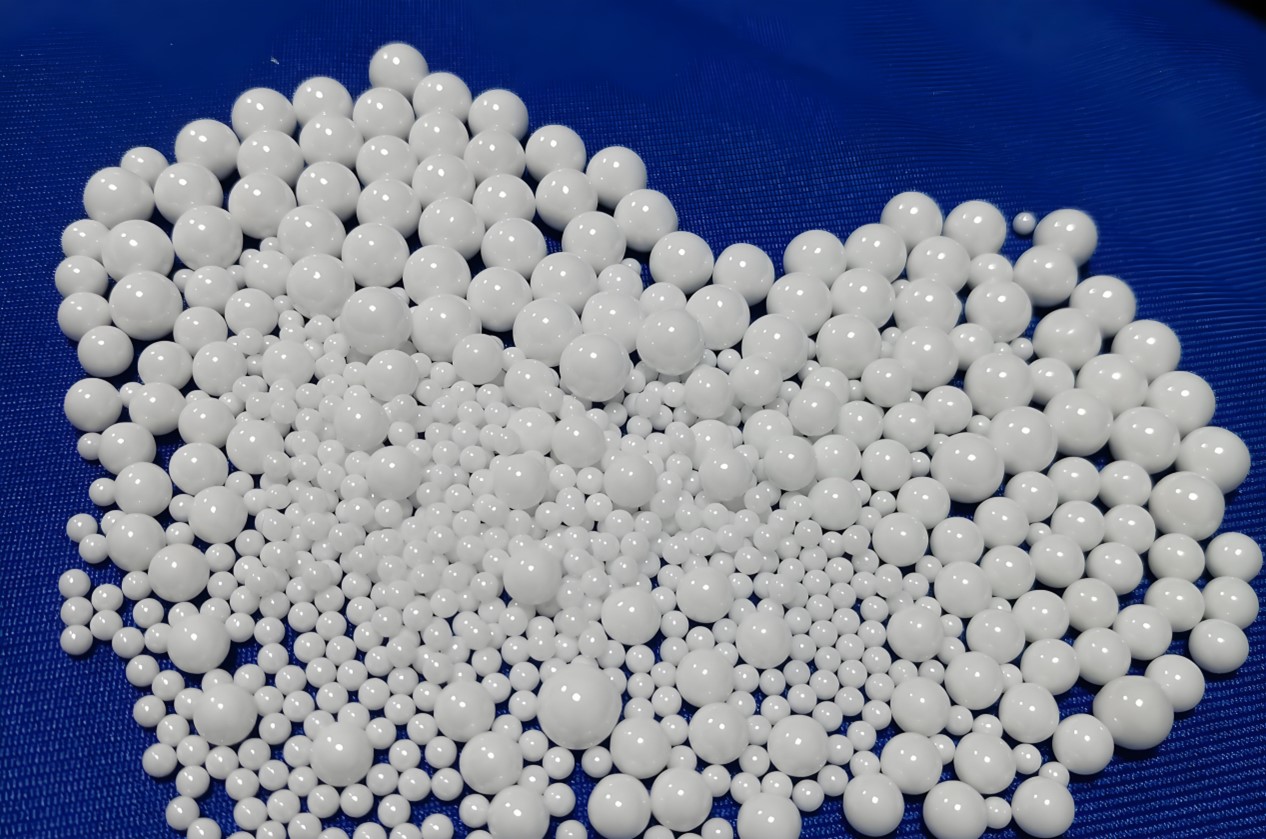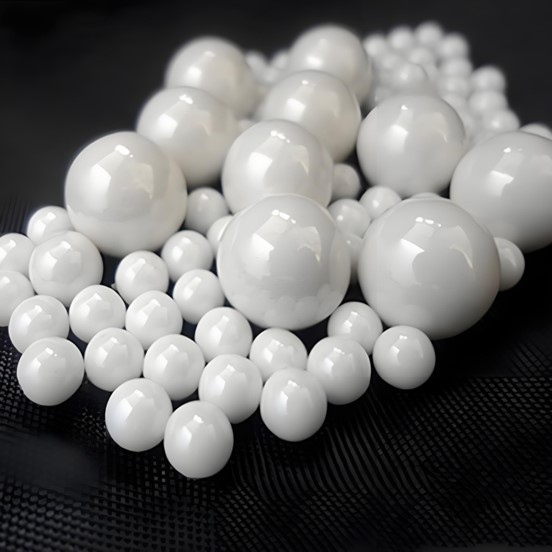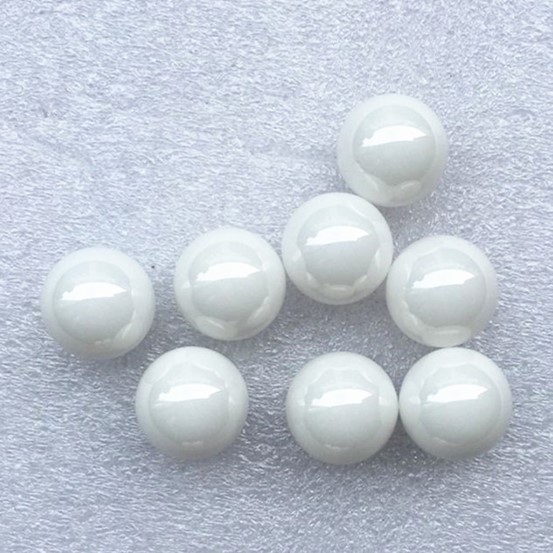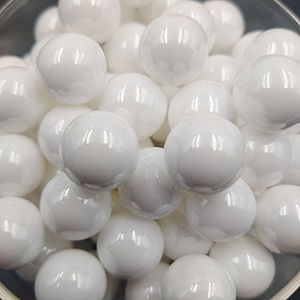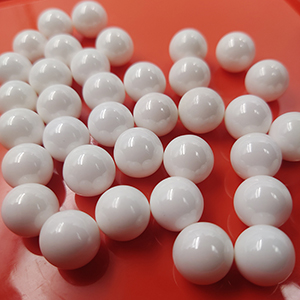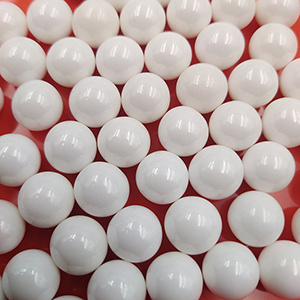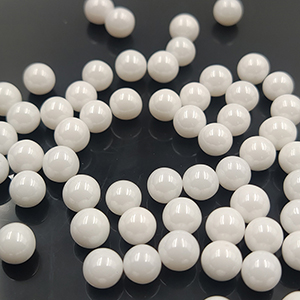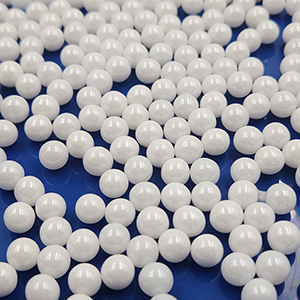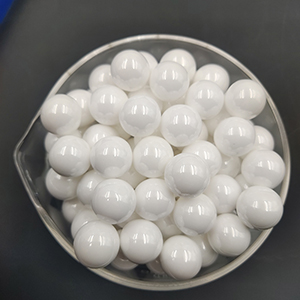The difference between zirconia beads and alumina balls
The differences between Zirconia Balls and alumina balls
In the field of materials science and industrial applications, both zirconia balls and alumina balls are highly regarded high-performance grinding and polishing materials, but they differ significantly in many aspects. A thorough understanding of these differences can help precisely select the appropriate materials in different scenarios and maximize their performance.
I. Comparison of Basic Characteristics
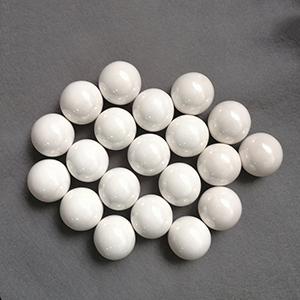
(1) Composition and Structure
Zirconia balls are mainly composed of zirconia (ZrO₂). Depending on the different stabilizers added, they can present monoclinic crystal form, tetragonal crystal form and cubic crystal form, etc. Take the common yttrium-stabilized zirconia balls as an example. The crystal structure is stabilized and its performance is improved by adding yttrium oxide (Y₂O₃). Alumina balls are mainly composed of alumina (Al₂O₃). According to the content of alumina, they are classified into different types, such as 95% alumina balls and 99% alumina balls. Their crystal structure is relatively stable, with α -Al ₂O₃ being the main component.
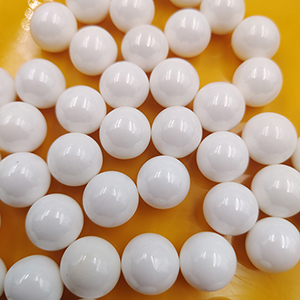
(II) Production Process
The production process of zirconia balls is rather complex, generally involving multiple procedures such as raw material mixing, molding, and sintering. Among them, the forming processes include isostatic pressing, injection molding, etc. The sintering process requires precise control of temperature and time to ensure its density and performance. The production process of alumina balls is relatively mature. After the raw materials are prepared, they are formed through methods such as extrusion and rolling, and then sintered at high temperatures. Although the production process of alumina balls seems simple, it also faces many technical challenges in the production of high-purity and high-precision products.
Ii. Differences in physical Properties
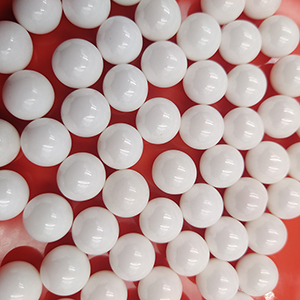
(1) Density
Zirconia balls have a relatively high density. The density of yttrium-stabilized zirconia balls is usually between 5.9 and 6.1g/cm³. The high density enables them to generate greater impact force during the grinding process, thereby enhancing the grinding efficiency. In contrast, the density of alumina balls is relatively low. The density of 95% alumina balls is approximately 3.6-3.8 g/cm³, while that of 99% alumina balls is between 3.9-4.0 g/cm³. The lower density gives them an advantage in some weight-sensitive application scenarios.
(2) Hardness and wear resistance
Zirconia balls have excellent hardness and wear resistance. Their Mohs hardness is approximately 7-8. During the grinding process, they wear less themselves and have a long service life, making them suitable for grinding materials with high hardness requirements. Alumina balls also have a relatively high hardness, with a Mohs hardness of 8-9. However, in terms of wear resistance, zirconia balls perform better under certain working conditions, especially during long-term and high-intensity grinding operations.
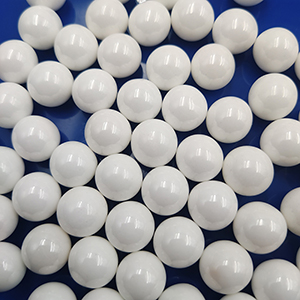
(3) Resilience
Zirconia balls possess unique phase transformation toughening properties. When subjected to external forces, the tetragonal crystal form will transform into the monoclinic crystal form, absorbing energy and thus demonstrating excellent toughness and being less prone to breakage. The toughness of alumina balls is relatively weak. When subjected to a large impact force, they are more prone to cracking and chipping.
Iii. Chemical Property Comparison
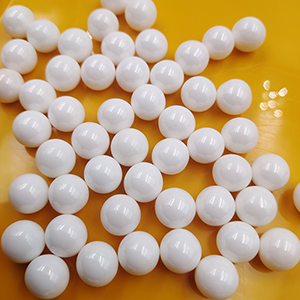
(1) Chemical stability
Zirconia balls have excellent chemical stability and can remain stable in most acidic and alkaline environments. Especially in high-temperature and highly corrosive conditions, they can still maintain their performance. Alumina balls also have good chemical stability, but in a strongly alkaline environment, alumina will react with alkali, leading to a decline in material performance.
(2) Thermal stability
Zirconia balls have high thermal stability and can maintain structural stability in high-temperature environments. Their service temperature can reach over 1000℃. Alumina balls also have good thermal stability and a wide range of applicable temperatures. However, in some extremely high-temperature environments, the thermal stability advantage of zirconia balls is more obvious.
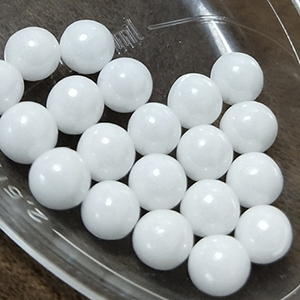
Iv. Differences in Application Scenarios
(1) Grinding field
In the grinding industry, zirconia balls, with their high density, high toughness and low wear, are often used for fine grinding of materials with high purity and hardness requirements, such as the grinding of positive and negative electrode materials for lithium batteries, electronic ceramics, pigments, etc. Alumina balls are suitable for grinding common materials and are widely used in industries such as refractory materials and ceramic raw materials. For scenarios where the cost of grinding media is highly sensitive, alumina balls offer better cost performance.
(II) Polishing field
Zirconia balls perform well in the field of precision polishing due to their smooth surface and moderate hardness, such as the polishing treatment of optical lenses, sapphire, semiconductor silicon wafers, etc. Alumina balls can also be used for polishing, but in polishing operations with extremely high requirements for surface finish and precision, zirconia balls can better meet the demands.
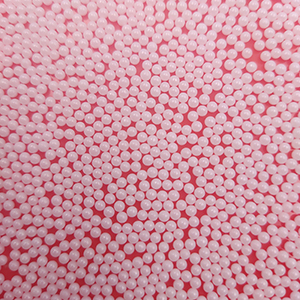
V. Cost-Price Comparison
Due to the high raw material cost and complex production process of zirconia balls, their price is relatively high, usually several times that of alumina balls. Alumina balls have a significant advantage in large-scale industrial production where cost control is strict due to their abundant raw materials, mature production processes and relatively low prices.
The above content comprehensively presents the differences between zirconia balls and alumina balls. If you still want to delve deeper into a certain aspect or wish to conduct analysis in combination with specific application scenarios, feel free to talk to me at any time.

